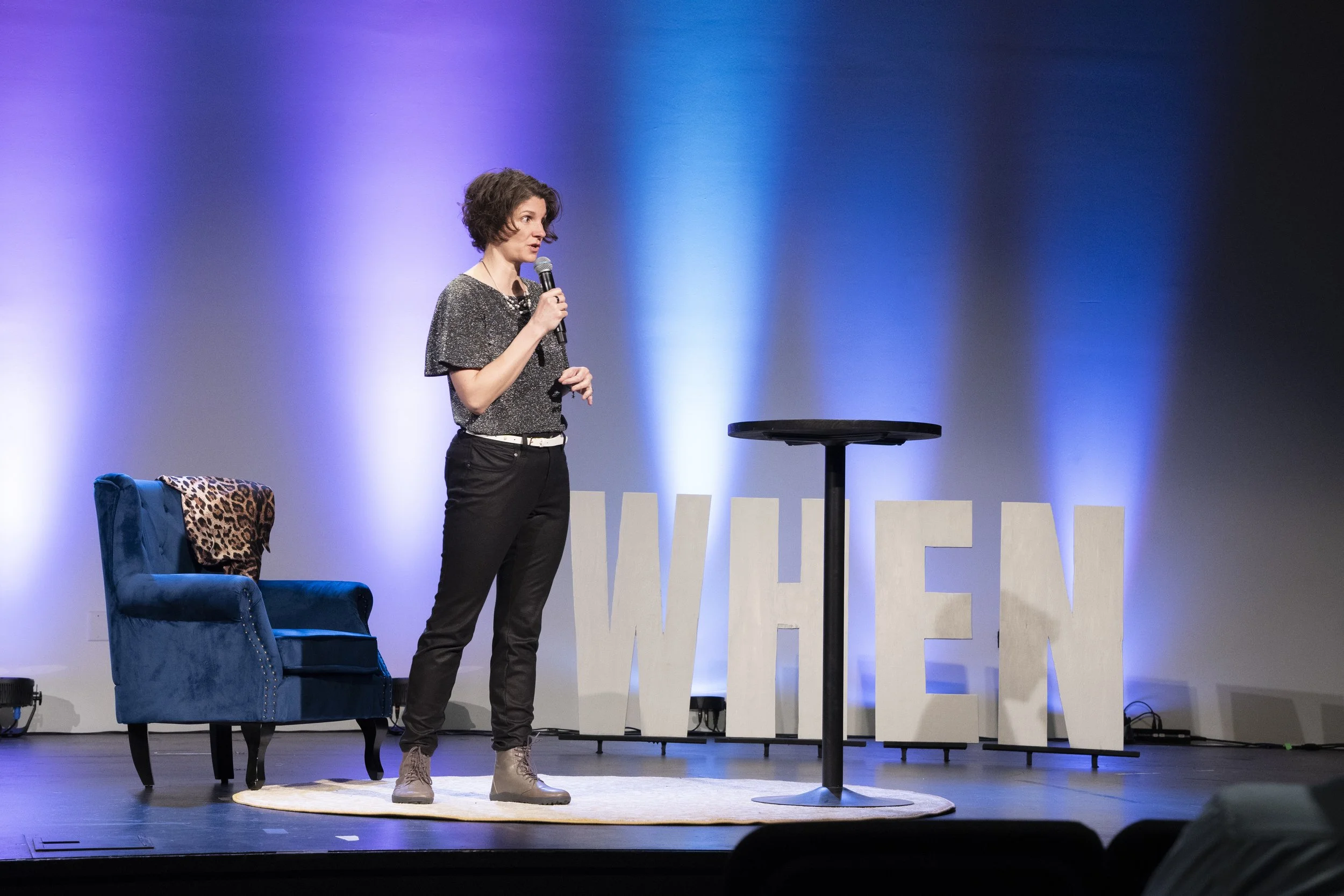Make Magic with Strategic Transitions
Photo credit: Abigail Schaefer Photography
The Importance of Strategic Transitions at Your Event
Most events include a full roster of speakers and a wide variety of activities. As the emcee, your job is to ensure that the transitions between each item on the agenda are as seamless as possible. When you're planning the order of activities, be mindful about the pacing of different parts of the day. Allow for some downtime. Pair deeper learning and heavier topics with something light to release pressure and provide "brain breaks" before diving back into more intense learning. Track the ebb and flow of the energy of the speakers and how they affect the crowd.
Transitioning between deeper, heavier sessions into something more light and fun can be tricky. Honor the weight and depth of those moments without leaving your audience feeling overwhelmed by too much intense emotion or complex information for too long. If they get stuck there, you'll lose momentum, and if you move them out too quickly, you risk appearing superficial.
The Power of a Theme
Putting the theme of your event front and center makes this part of your job that much easier. If you have many different types of speakers or a wide range of topics to cover, it will be more difficult to weave everything together and return to the larger theme during transitions. Connecting speakers and topics should happen during the planning of the agenda so that your audience is consistently being reminded about the part they're playing in the bigger purpose of your event.
I once emceed a women's conference with the theme, "Collaborate." The intention behind the entire event was about business, professional and personal growth in relation to others. Everyone in the room was encouraged to explore opportunities through authentic connection, deepening relationships and generously supporting one another.
The theme of collaboration was present in every session from the VIP speaker to the closing keynotes. During transitions between speakers and activities, I reinforced an idea or intention from the previous session that emphasized the importance and relevance of the "collaborate" theme. For example, during speed networking, I directed the attendees to answer specific questions that encouraged the participants to get to know each other on both a personal and professional level. This allowed them to identify things in common that they wouldn't have known otherwise, opened them up to new ways of relating with each other and encouraged them to explore areas of collaboration.
Even if your event takes similar form and shape year after year, you can still layer new themes on top of it. Sometimes, an outside perspective can help you see the common thread woven into your event—even if it's unintentional or unofficial. Strategic selection of your speakers and discussion topics helps you to highlight the patterns and connections between them during your transitions.
Flexibility and Observation
As the event unfolds, be aware of how the keynotes, breakouts and other activities fit together and whether your thoughtful planning is paying off or missing the mark. You need to have the courage to pivot in the moment if something isn't landing right with your audience and communicate to make sure that any adjustments you make are appropriate and agreeable to your team.
While speaker introductions, sponsor recognition and common announcements tend to be strictly scripted, transitions usually involve more improvisation. Even if you know each session's topic and takeaways, what the speaker or facilitator presents could be much different than the description they originally provided, so you've got to stay on your toes. You set the example of how you want your audience to behave, so you need to pay the most attention.
Trust your instincts that if something from a session stands out to you, it's something that the audience will appreciate hearing again. If it helps you, take notes during their presentations so that you can share those "aha moments" and emphasize the brilliance and inspiration of the speaker again after they leave the stage.
The Magic of Transitions
Effective transitions help an audience lock in and learn. It's often where the magic happens, and magic doesn't always show up according to plan. Follow your intuition. Follow the room's energy. Trust your instincts and take action with confidence.
Prepare well and leave yourself flexible to move where the moment takes you. As an emcee, it's more about familiarization than memorization. Be familiar enough with the content, the agenda, the script and the speaker flow and flexible enough to make changes when necessary. Know your audience. Know your speakers. Know your sponsors. Know your role. Keep the mission in mind so that you can make on-the-spot decisions about the direction of the event that seem effortless. I often thoughtfully consider several different options for transitional commentary or activities that could fit in and keep them in my back pocket (sometimes literally) so that I can pull out the right one at the right moment without skipping a beat.
Preparation is pivotal.
Flexibility is fundamental.
Ready to take your event hosting skills to the next level?
This article features information from my book, Welcome to the Stage: The 360° Approach to Hosting Events Like a Pro AVAILABLE NOW! If you enjoyed it, you'll love the comprehensive guidance, practical strategies and insider techniques I share in the full book.
Get your copy today and discover how to make your next event the one everyone remembers!

